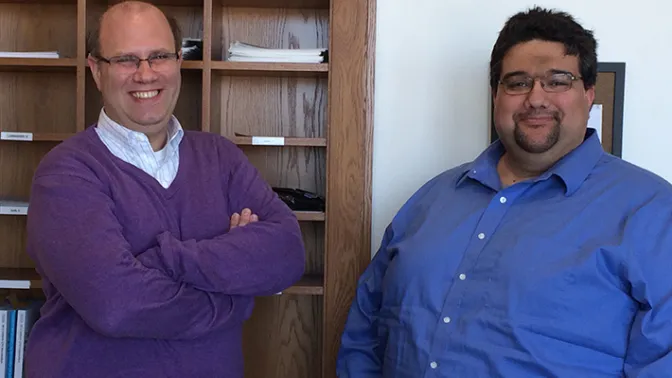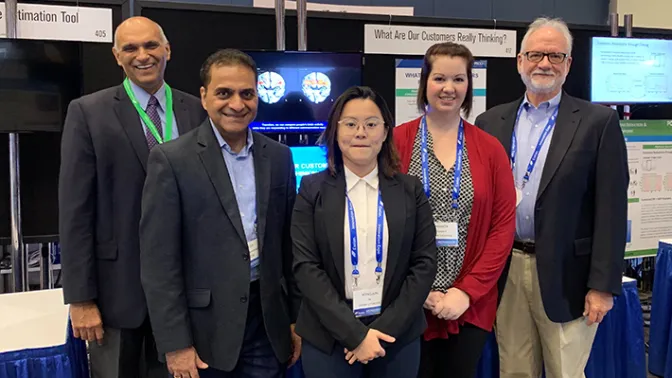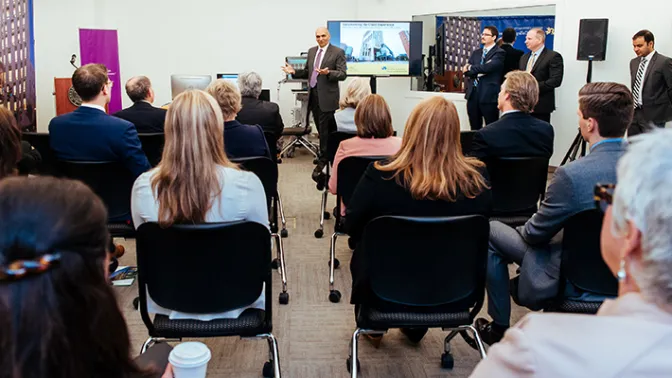
LeBow Students Research the Brain's Reaction to Super Bowl Ads
Every February, millions of Americans sit down Super Bowl Sunday to watch the big game. For many, it’s the million dollar advertisements that draw more excitement than the players on the field.
This summer, two LeBow undergraduate students worked with marketing faculty member Rajneesh Suri, PhD along with faculty and PhD students from the School of Biomedical Engineering, Science and Health Systems, to identify how the brain reacts to Super Bowl advertisements. Their preliminary results have led them to believe good Super Bowl advertising produces different brain activity than bad commercials. This research could help advertisers improve commercials before spending millions on the prime ad placement.
Using LeBow’s behavioral lab and functional near infrared spectroscopy (fNIR) brain imaging technology, sophomores Maxwell Goldstein and Gage Agag tracked areas of the brain as they react to the commercials then compared those across various populations. fNIR is a non-invasive imaging method that measures blood flow and oxygenation levels to determine brain activity. The students measured brain activity while showing ads identified by USA Today Ad Meter as the best and worst from Super Bowls XLVII, XLVIII and XLIX.
While the data collection is ongoing, the preliminary results led them to the conclusion that advertisements considered “good” produced different overall brain activity than the “bad” advertisements. While more research needs to be conducted to draw concrete conclusions, it appears that the different neural activity produced may be useful in informing companies about how television advertisements may be received.
In addition, the students also explored distinct differences in brain reactions based on both gender and language. Goldstein, a finance and business analytics major, looked at brain wave activity difference between men and women to see if gender affected the response to the different commercials. Agag, a business and engineering major, explored the brain’s response between native and non-native English speakers. Both discovered distinct differences in neural activity between their two groups.
Final results of this continued research will be forthcoming.
Goldstein and Agag hope companies will begin using this type of brain imaging and testing to determine the potential success of future advertisements before airing them.
“Television advertisements are expensive,” said Goldstein. “It is best that these companies know what will work best before purchasing ads.”
“When you are about to spend $5 million for a 30 second spot during the Super Bowl, you can test how neural activity lines up with behavioral data to get a better idea about the potential success of the ad,” added Agag.
In this case, they define success as having a good reception by the audience, not necessarily long-term effects on memory/branding.
The students conducted their research as part of Drexel’s Students Tackling Advanced Research (STAR) program, which allows first-year students to participate in research with faculty during the summer after their freshman year when they would normally be on break.
The Behavioral Lab is wired for audio and video recording, sound playback and climate control, allowing researchers to study how people act and react.
The business analytics major includes coursework in statistics, operations research, management information systems, econometrics and modeling.
The BSBA Finance major includes classes in economics, accounting, statistics and marketing, in addition to corporate finance, investment securities and more.


